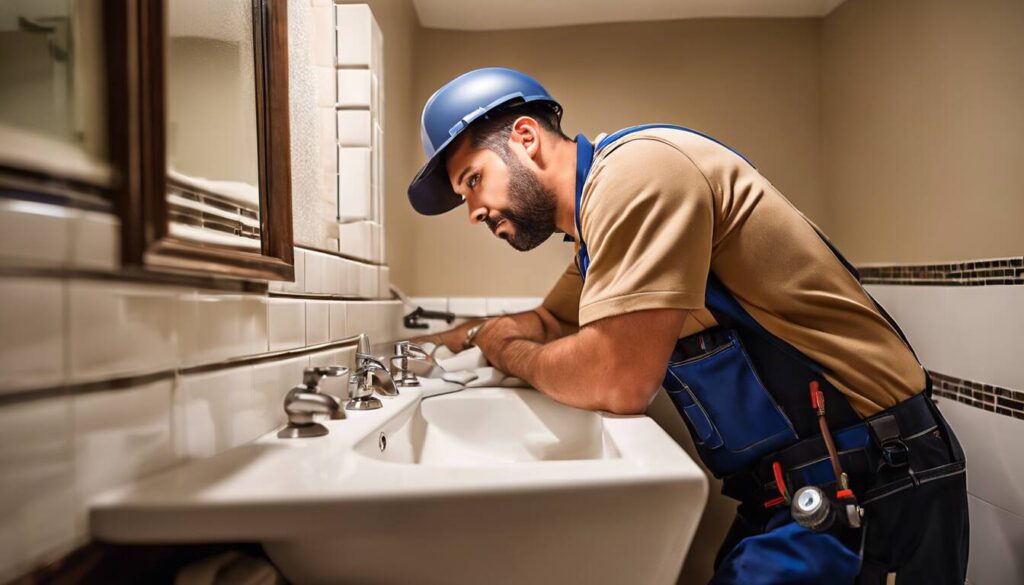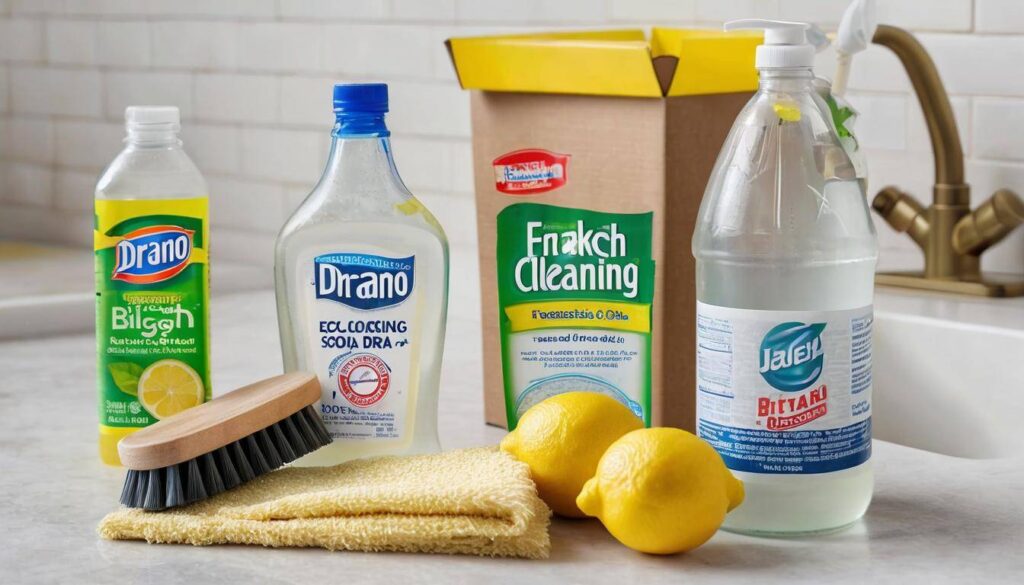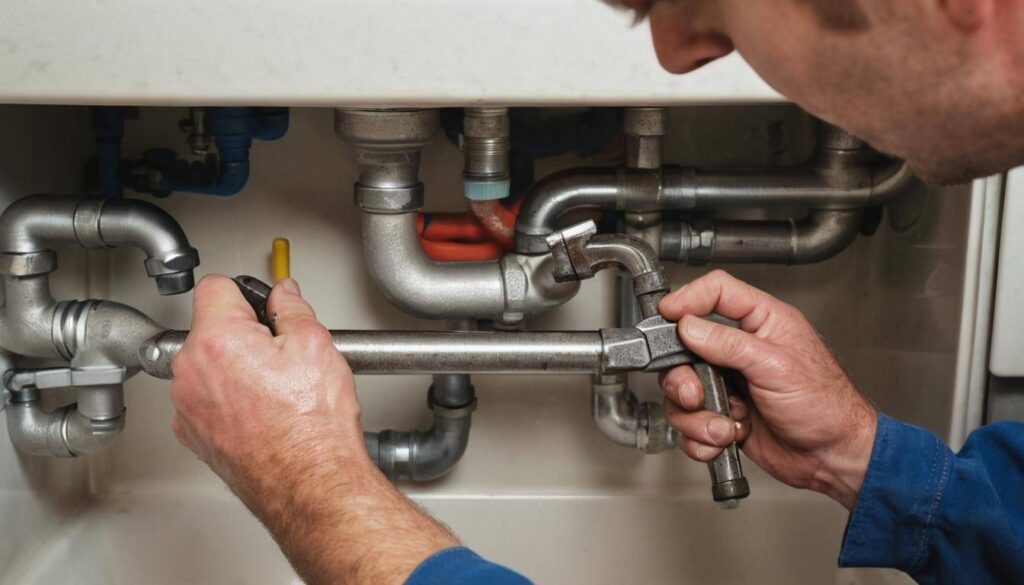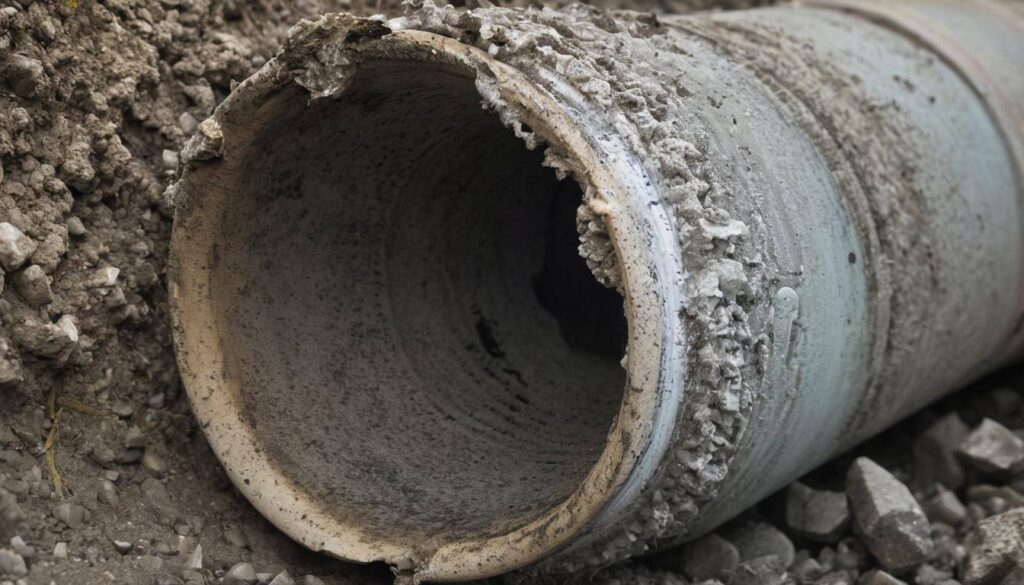Preventing Common Plumbing Problems: Tips and Solutions for DIY Maintenance
Preventing common plumbing issues is achievable when you understand the value of regular inspections. Regular plumbing checks can help spot leaks, blockages, and wear signs before they become significant concerns, thus saving you costly repair bills. But here’s what most people miss; these inspections don’t just serve to ward off potential disasters – they are a golden chance to ensure your plumbing systems work at their best. So, next time you spot water stains or sense musty odors, know it’s time to take a closer look at your pipes.
One effective step is to regularly inspect exposed pipes for any signs of leaks, corrosion, or damage, and promptly repair or replace any compromised sections. Additionally, scheduling routine professional maintenance, such as drain cleaning and water heater inspections, can proactively address potential problems before they escalate.

Regular Plumbing Inspections
Imagine that your plumbing system is like the circulatory system of your home. It needs regular check-ups to stay healthy and prevent any potential blockages. Regular plumbing inspections are thorough checks for leaks, clogs, and signs of wear in plumbing fixtures and pipes.
Starting with leaks, water droplets can add up to hundreds of gallons wasted every year if left unattended. To find them, look for water stains, drips, or musty odors in the house – these can all be signs of a leak somewhere. In addition to being wasteful, leaks can lead to water damage over time.
“Dripping water wears away a stone.” – Lucretius
Catching these issues early prevents the stress and cost of fixing widespread water damage.
Apart from leaks, inspect exposed pipes for visible signs of corrosion or damage. Corrosion, often caused by chemical reactions in the water, can weaken pipes and ultimately lead to leaks or burst pipes. Routine checks for this can detect problems early on.
Consider this story: Joe didn’t pay much attention to his plumbing until he noticed a damp patch on the wall near his bathroom. Upon inspection, he found a small leak that had gone unnoticed for quite some time, causing considerable damage inside the wall. A routine inspection could have saved him from extensive repairs and restoration.
Some might argue that frequent plumbing inspections may seem like an unnecessary hassle, but it’s important to consider that regular inspections offer an opportunity to identify potential issues before they become major problems. Investing a little time now could save you from the stress and expense of dealing with substantial plumbing issues down the road.
Regular plumbing inspections aren’t just about finding problems; they also help ensure that your plumbing systems are operating optimally. By prioritizing preventative maintenance through regular inspections, homeowners can avoid emergency situations and maintain a well-functioning plumbing system for years to come.
The proactive approach to maintaining your plumbing system doesn’t stop at inspections; it extends to simple DIY maintenance techniques that can keep everything running smoothly. Let’s now explore the practical strategies for DIY plumbing maintenance.
DIY Plumbing Maintenance
Maintaining your plumbing can seem painful, but with a few simple steps, you can prevent many common issues. Let’s discuss practical DIY maintenance tips that anyone can do at home to ensure their plumbing stays in top condition.
Clearing Drains Regularly
Drains are notorious for clogging at the most inconvenient times, causing frustration and potential damage. A simple yet effective way to prevent this is by using a drain strainer to catch debris before it enters your pipes. This small, inexpensive tool can save you from costly plumbing repairs down the line. In addition to using a strainer, periodically flushing your drains with hot water and vinegar can help break down buildup, preventing clogs.
Checking Toilet Components
A leaky or malfunctioning toilet can waste a significant amount of water and create unnecessary expenses. By regularly inspecting and replacing worn-out components such as flappers, fill valves, and flush valves, you can evade common toilet problems. Imagine identifying a worn-out toilet flapper during your routine inspection and promptly replacing it to prevent water wastage and the inconvenience of a malfunctioning toilet in the future.
Insulating Exposed Pipes
In cold climates, insulated exposed pipes are crucial to prevent freezing during winters. Frozen pipes disrupt water flow and pose the risk of bursting, leading to substantial water damage. Consider insulating the exposed pipes in your home’s vulnerable areas before the onset of winter. This proactive measure reduces the likelihood of frozen or burst pipes, potentially averting a plumbing catastrophe.
By implementing these DIY maintenance practices, you can significantly reduce the likelihood of encountering common plumbing problems while also prolonging the lifespan of your plumbing system. Taking a proactive approach to maintaining your plumbing not only saves you money in the long run but also provides peace of mind knowing that your home’s essential systems are well cared for.
Now that we’ve covered effective DIY maintenance tips, let’s move on to discussing whether it’s best to fix or replace damaged plumbing parts.
Damaged Parts: To Fix or Replace?
The decision to fix or replace a damaged plumbing part can be daunting. It’s crucial to start by assessing the extent of damage. Minor issues, such as a small leak or a loose connection, might only require a quick fix, but more severe damage, like extensive corrosion or cracks, may necessitate a complete replacement.
It’s similar to how you’d approach fixing a broken window in your home. If it’s just a small crack, it might be okay to repair it with some adhesive, but if the window is shattered, you’d need to replace the entire pane. The same principle can be applied to plumbing parts—small problems, small repairs; big problems, big solutions.
For instance, if you notice that an old pipe under your sink is leaking due to corrosion at the joints, trying to patch it up could be like putting a band-aid on a bigger wound. The age of the part is also an important factor which brings us to our next consideration.
Consider the Age of the Part
Older plumbing components might have endured years of wear and tear and as a result, they may benefit more from a complete replacement rather than a temporary fix. Over time, metal pipes can become weakened due to corrosion or mineral buildup, making them more susceptible to bursting or developing leaks.
Let’s say you’re dealing with an old water heater that has started showing signs of rust and mineral deposits. Given its age and the potential for further deterioration, fixing small issues may only provide short-term relief and additional problems are likely to arise sooner than later.
Considering the age of the part allows us to make a more informed decision about whether repair or replacement is the better long-term solution.
Installing and Using Shut-off Valves
Imagine a scenario where there’s a plumbing emergency in your home. Water is leaking from a pipe or an appliance, and you need to stop the water flow quickly to prevent further damage. This is where having shut-off valves installed for individual fixtures or appliances becomes crucial.
Shut-off valves are like the emergency brake for your plumbing system – when something goes wrong, you can quickly isolate the problem area without having to turn off the water supply to the entire house. This targeted isolation of the water supply is incredibly useful for maintenance purposes as well as during emergencies like leaks. It not only saves time and effort but also prevents potential water damage to your property.
For instance, if a pipe bursts in your bathroom, you can simply turn off the shut-off valve for that particular section instead of shutting off water to the entire house. This quick action can significantly reduce the extent of damage caused by the leak while waiting for professional assistance.
Having basic knowledge of shut-off valve locations and operation is essential for every homeowner. It’s important to know where each shut-off valve is located and how to operate it in case of an emergency. This knowledge can make a significant difference in minimizing damage from unexpected plumbing issues.
When installing shut-off valves, consider labeling them clearly, so you and your family members can easily identify which valve controls which specific area or fixture. A little preparation can go a long way in efficiently handling plumbing emergencies.
By understanding the importance of shut-off valves and knowing how to use them effectively, you can take proactive steps to prevent potential water damage and ensure swift responses during plumbing emergencies.
Understanding the value of shut-off valves is just one aspect of proactive plumbing maintenance. Now, let’s explore guidelines to regulate water pressure and its impact on your plumbing system.
Guidelines to Regulate Water Pressure
Water flows through our homes at a specific pressure. Imagine it as Goldilocks would say, not too high, not too low, but just right. When the pressure is too high, your pipes can start to feel the strain—similar to trying to hold back a big crowd pushing their way through a narrow door. The pressure intensifies, and something might give way.
Pipes in your home are built to handle a certain amount of pressure called the maximum working pressure (MWP). But when the water pressure goes above this level, it can cause damage over time. Leaks, bursts, and noisy banging sounds in your pipes are all signs of high water pressure. Not only does it damage your plumbing system but also appliances like dishwashers and washing machines that rely on a steady flow.
One piece of advice? Invest in a water pressure gauge. It’s like having a speedometer for your house’s water system. It measures how hard or fast the water is pushing through your pipes.
Understanding Water Pressure Levels
Normal water pressure in a residential home falls somewhere between 40-60 pounds per square inch (PSI). To put that into perspective, a car tire usually needs around 32 PSI of air.
When you have a high-pressure reading:
- Pipes and fixtures can get damaged.
- Appliances like dishwashers, refrigerators with ice makers, and laundry machines may also suffer.
A simple solution to this problem is fitting a water pressure regulator. Your plumber can install one for you if needed.
We all know what it feels like to walk through a crowded space – bustling, loud, and sometimes overwhelming. In the same way, high water pressure can result in loud bangs, clanging pipes, and demanding faucets seemingly crying for relief from the immense force.
Similarly, when the pressure is too low:
- Showers lack force
- Dishwashers take longer to complete cycles
- Appliances don’t function optimally because they rely on a certain level of water pressure to run smoothly.
A regulator applies just the right amount of ‘brakes’ on the flowing water to bring its pressure down within safe levels. Think of it as an automatic speed control feature on a car – ensuring you don’t go overboard.
It slows down fast-moving water so nothing gets hurt—no leaks, no burst pipes—just sustained flow without any unwanted surprises down the line.
With these simple tools and tips in place, you’ll safeguard your home’s plumbing against damagingly high or low water pressure. Remember, steady and regulated water pressure means peace and longevity for your plumbing system!
As we’ve fortified our understanding about maintaining healthy water pressures in our plumbing system, let’s now explore preventive measures against corrosion and clogs in pipes.
Preventing Corrosion and Clogs in Pipes
Pipes, although concealed from view, are the unsung heroes of our homes. They deliver water to satisfy our thirst, facilitate cleanliness, and aid in cooking. However, over time, they can succumb to corrosive forces and stubborn clogs, causing significant inconvenience. Here are some essential steps to safeguard your pipes against corrosion and clogs.
Preventing Corrosion:
Over time, the walls of your pipes can start to corrode due to factors such as high mineral content in the water, low pH levels, and excessive oxygen exposure. This corrosion can lead to leaks and a reduced lifespan for your plumbing setup. Implementing these methods will help prevent this from happening.
-
Water Filtration Systems:
Installing a water filtration system can significantly reduce the mineral content in the water, effectively preventing mineral buildup in your pipes.
- Regular Inspections: Schedule routine inspections of your piping system to identify any early signs of corrosion or leaks. Early detection allows for timely repairs, preventing potential extensive damage.
Mitigating Clogs:
Clogged drains can be disruptive and sometimes distressing. Taking proactive steps to prevent blockages not only ensures smooth plumbing function but also saves you from the hassle of dealing with sudden drain issues.
- Enzymatic Cleaners: Enzymatic cleaners break down organic materials in drains, preventing clogs from forming and ensuring smooth water flow. Regular use of these cleaners can help maintain clear drains and prevent blockages.
- Professional Drain Cleaning: Scheduling professional drain cleaning at regular intervals helps remove any accumulated debris or sludge that could potentially cause future blockages in the plumbing system.
Regular upkeep goes a long way in preserving the integrity of your home’s plumbing system. It not only saves you from unexpected plumbing emergencies but also contributes to a smoothly functioning household. By taking these preventive measures, you’re actively fostering a healthy environment for your family while ensuring the longevity of your home’s infrastructure.
Ensuring the proper maintenance of your plumbing system is an investment in the comfort and efficiency of your home. Following these preventive measures will go a long way in maintaining a reliable and durable plumbing infrastructure.



